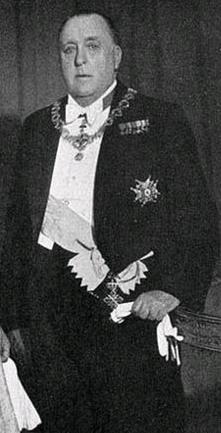by Scott Mehl
© Unofficial Royalty 2023
The Kingdom of the Two Sicilies was located in today’s southern Italy. It included the island of Sicily and all of the Italian peninsula south of the Papal States. Ferdinando I, the first King of the Two Sicilies, had previously reigned over two kingdoms, as Ferdinando IV of the Kingdom of Naples and Ferdinando III of the Kingdom of Sicily. He had been deposed twice from the throne of Naples: once by the revolutionary Parthenopean Republic for six months in 1799 and again by Napoleon in 1805, before being restored in 1816 after the defeat of Napoleon. After the 1816 restoration, the two kingdoms were united into the Kingdom of the Two Sicilies.
Vittorio Emanuele II, King of Sardinia became a driving force behind the Italian unification movement along with Giuseppe Garibaldi, a general and nationalist, and Giuseppe Mazzini, a politician and journalist. Garibaldi conquered Naples and Sicily, the territories of the Kingdom of Two Sicilies. Francesco II, King of the Two Sicilies was deposed, the Kingdom of the Two Sicilies ceased to exist, and its territory was incorporated into the Kingdom of Sardinia. Eventually, the Sardinian troops occupied the central territories of the Italian peninsula, except Rome and part of Papal States. With all the newly acquired land, Vittorio Emanuele II was proclaimed the first King of the new, united Kingdom of Italy in 1861.
********************
Prince Alfonso of Bourbon-Two Sicilies, Infante of Spain, Duke of Calabria was one of the claimants to the headship of the House of Bourbon-Two Sicilies and the former throne of the Kingdom of the Two Sicilies from 1960 until his death in 1964.

source: Wikipedia
Alfonso was born in Madrid on November 30, 1901, the eldest child of Prince Carlos of Bourbon-Two Sicilies, Infante of Spain, and María de las Mercedes, Princess of Asturias. His mother was heiress-presumptive to her younger brother, King Alfonso XIII of Spain. He had two younger siblings:
- Fernando (1903) – died in childhood
- Isabella Alfonsa (1904) – married Count Jan Kanty Zamoyski, had issue
Alfonso also had four half-siblings from his father’s second marriage to Princess Louise of Orléans:
- Carlos (1908) – unmarried
- María de los Dolores (1906) – married (1) Prince Augustyn Jozef Czartoryski, had issue; (2) Carlos Chias, no issue
- María de las Mercedes (1910) – married Infante Juan of Spain, Count of Barcelona, had issue
- María de la Esperanza (1914) – married Prince Pedro Gustão of Orléans-Braganza, had issue
Upon his mother’s death in 1904, Alfonso became heir-presumptive to the Spanish throne, although he was not given the traditional title of Prince of Asturias. This ended in 1907 when the King and his wife had their first son, also named Alfonso.

Princess Alicia of Bourbon-Parma. source: Wikipedia
Alfonso married Princess Alicia of Bourbon-Parma on April 16, 1936 at the Minoritenkirche in Vienna, Austria. Alicia was the daughter of Elia, Duke of Parma and Archduchess Maria Anna of Austria. The couple had three children:
- Princess Teresa, Duchess of Salerno (1937) – married Íñigo Moreno y Arteaga, Marquess of Laserna, had issue
- Prince Carlos, Infante of Spain, Duke of Calabria (1938) – married Princess Anne of Orléans, had issue
- Princess Inés, Duchess of Syracuse (1940) – married Luis de Morales y Aguado, had issue
Infante Alfonso, Duke of Calabria died in Madrid on February 3, 1964. As an Infante of Spain, his remains were placed in El Escorial, the traditional burial site of the Spanish royal family. He will eventually be interred in the Pantheon of Princes.
When Prince Ferdinando Pio died in 1960, a dispute began over the headship of the House of Bourbon-Two Sicilies. As he had no surviving sons, it should have passed to the descendants of his younger brother, Prince Carlo, who had died in 1949. Thus, Prince Alfonso claimed to be the rightful head of the House of Bourbon-Two Sicilies. This was challenged by another brother of Ferdinando Pio, Prince Ranieri, Duke of Castro. The primary issue of the dispute is whether Carlo had renounced his rights of succession when he married the Spanish heiress-presumptive, Maria de las Mercedes, Princess of Asturias, in 1901. At the time, Carlo became a Spanish subject and was made an Infante of Spain. Prince Ranieri interpreted this as a renunciation of any claims to the throne of Two Sicilies, thus making him the rightful heir. However, Infante Alfonso argued that the renunciation would have only taken effect if Mercedes had ascended to the Spanish throne.
The dispute continues today, with two branches of the family claiming to be the rightful heir and Head of the House of Bourbon-Two Sicilies:
* * * * * * * * * *
Kingdom of the Two Sicilies Resources at Unofficial Royalty
* * * * * * * * * *
This article is the intellectual property of Unofficial Royalty and is NOT TO BE COPIED, EDITED, OR POSTED IN ANY FORM ON ANOTHER WEBSITE under any circumstances. It is permissible to use a link that directs to Unofficial Royalty.
